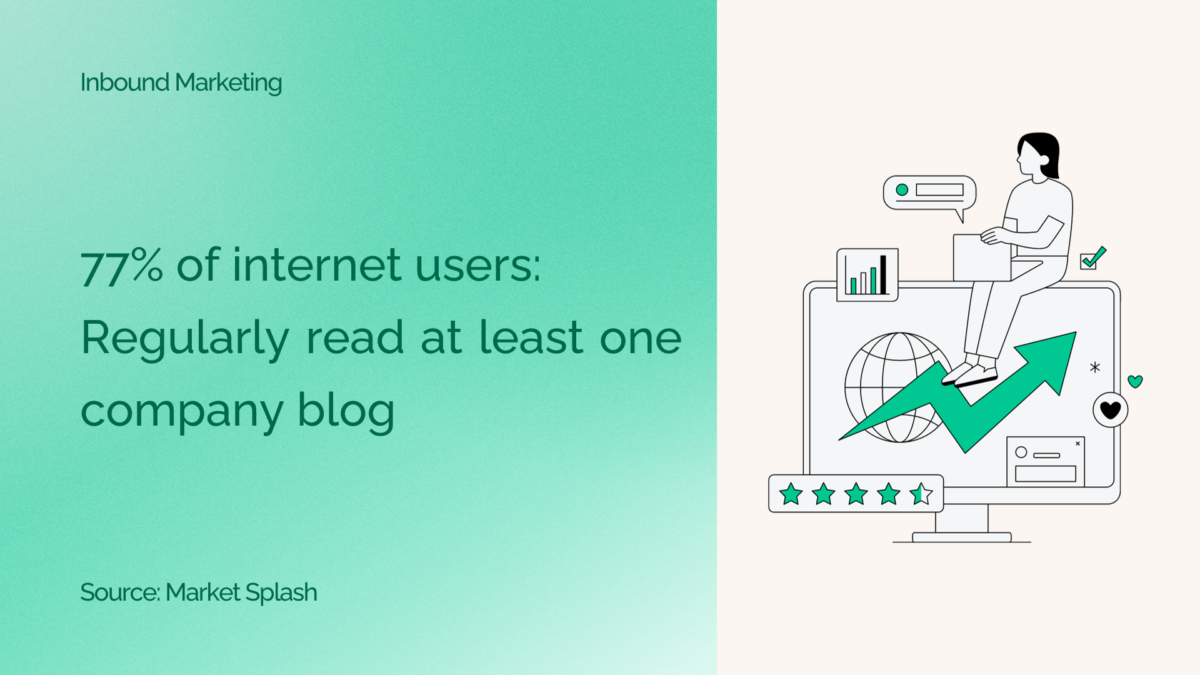Inbound marketing has transformed how businesses connect with their audience, becoming a crucial facet of any digital marketing strategy. It amplifies a business’s digital footprint, elevates its presence, and expands its customer reach. Moreover, staying ahead of the curve is essential, especially for seasoned marketers.
This blog post will explore the essence of inbound marketing and its global traction, followed by three game-changing trends that dominate today: visual content, mobile optimisation, and personalisation strategies. These trends offer immense potential to boost brand reach and engagement.
What is Inbound Marketing?
Inbound marketing is a strategic approach to attract and engage customers by creating and distributing valuable, relevant, consistent content and experiences tailored to their needs and interests. Equally important to note is that it is an effective way to attract qualified leads and convert them into loyal customers.
This form of marketing is a customer-centric, non-interruptive approach that is appealing as consumers take control of their buying journey and actively search for information online. Recent studies have shown that 77% of internet users regularly read at least one company blog and 79% of companies with a blog report a positive ROI. Additionally, 85% of customers research the web before making a purchase.
Overall, Inbound marketing aims to build trust and establish long-term relationships with potential and existing customers by providing them with valuable information and experiences at each stage of the buyer’s journey.
Vital elements of inbound marketing:
- Search engine optimisation (SEO): By optimising your website for relevant keywords, you can easily attract organic traffic from people already searching for your offers.
- Content marketing: creating and distributing valuable, relevant, consistent content to attract and retain a clearly defined audience and drive profitable customer action. Content comes in many forms, including blog posts, articles, infographics, videos, podcasts, and e-books.
- Social media marketing: By sharing engaging content and interacting with your followers, you can attract new leads, nurture existing information, and drive traffic to your website.
- Email marketing: By sending targeted and relevant emails, you can encourage subscribers to take desired actions, such as visiting your website or purchasing.
Exploring Inbound Marketing In Africa
Africa, a continent of vast potential and untapped opportunities, is steadily embracing the power of inbound marketing. This innovative approach to reaching and engaging customers has gained momentum across various industries in African countries.
According to studies by 6Wresearch, Africa’s Advertising market size will grow at a CAGR of 4.9% during 2023-2029 owing to fixed broadband subscriptions in Africa. Additionally, Sub-Saharan Africa’s mobile consumer base is poised to grow by 4.5% in 2025, reaching 613 million customers.
One of the key reasons why inbound marketing is gaining traction in Africa is its cost-effectiveness. Inbound Marketing costs $14 less than traditional marketing for each newly acquired customer. Again, the lead acquisition cost for inbound marketing is at least 67% less than that of outbound marketing.

Furthermore, the rise of digital technology has played a significant role in fueling the growth of inbound marketing in Africa. With increasing internet penetration rates and smartphone usage across the continent, businesses now have access to more potential customers than ever before.
Today’s consumers are more empowered than ever; they actively seek out information online before making purchasing decisions. By leveraging inbound marketing techniques such as informative blog posts or engaging videos tailored to African audiences’ preferences, businesses can capture attention organically rather than interrupting prospects with traditional advertising methods.
Trends Shaping Inbound Marketing
The rise of visual content
Visual content is any form of media communicating a message through visuals, such as images, videos, infographics, or even memes. This type of content not only grabs attention but also engages and resonates with audiences on a deeper level.
Why is visual content so effective? Well, it’s simple – humans are visual creatures. We process images much faster than text and remember them for longer durations. Studies have shown that people tend to retain 80% more information when it is presented visually.
With the rise of social media platforms like Instagram and Pinterest, visual content has become even more crucial for businesses looking to connect with their target audience. These platforms thrive on eye-catching visuals that inspire users to like, comment, and share posts.
The shift to mobile
With the advent of smartphones and tablets, people are accessing information on the go more than ever. Therefore, businesses must adapt their marketing strategies to cater to mobile users.
One key aspect of this shift is responsive web design. Websites must be optimised for mobile viewing, with easy navigation and quick loading times. Users expect a seamless experience across all devices, so businesses should invest in a mobile-friendly website.
Another critical consideration is mobile advertising. With most internet browsing happening on mobile devices, businesses must incorporate mobile ads into their marketing campaigns. Whether through social media ads or targeted display ads, reaching customers where they spend most of their time is essential.

In addition, businesses should tailor content for mobile consumption. People tend to scroll quickly through content on their phones, so it’s vital to capture attention with concise and engaging headlines and visuals. Furthermore, leveraging location-based targeting can help businesses reach potential customers who are nearby and actively searching for products or services similar to what they offer.
The power of personalisation
Gone are the days of one-size-fits-all marketing campaigns. The power of personalisation lies in its ability to create a tailored experience for each customer. By gathering data on their preferences, behaviour, and demographics, you can deliver content that speaks directly to their needs and interests.
Personalised marketing allows you to build stronger relationships with your customers by showing them that you understand their unique challenges and goals. Whether through email campaigns addressing specific pain points or product recommendations based on past purchases, personalised messaging makes customers feel seen and valued.
How to Make the Most of Inbound Marketing
Inbound marketing has become a powerful strategy for businesses to attract and engage their target audience. As these trends dominate, marketers must stay ahead of the curve and make the most of this evolving approach.
- Focus on creating high-quality content that resonates with your audience. Whether it’s blog posts, videos, or social media updates, ensure your content is informative, engaging and valuable to your customers. Content will not only help you build credibility but also drive organic traffic to your website.
- Leverage the power of social media platforms. With billions of active users worldwide, platforms like Facebook, Instagram and LinkedIn offer immense potential for reaching and connecting with your target audience. Develop a robust social media strategy that includes regular posting, engagement with followers and paid advertising campaigns.
- Invest in search engine optimisation (SEO) techniques: SEO improves your website’s visibility on search engines. Conduct thorough keyword research and optimise your website’s content accordingly. What’s important to note is that SEO will increase organic traffic and boost conversions.
Conclusion
Inbound marketing is a powerful strategy that continues to evolve and shape marketing. This approach focuses on attracting and engaging customers through valuable content, personalised experiences, visual storytelling, and mobile optimisation.
With the rise of digital technology and changing consumer preferences, businesses must adapt their inbound marketing strategies accordingly. By embracing these trends – the rise of visual content, the shift to mobile, and the power of personalisation – companies can stay ahead of the curve and effectively connect with their target audience.
To make the most of inbound marketing:
1. Invest in creating high-quality visual content that tells your brand’s story.
2. Optimise your website and online presence for mobile devices to reach customers on the go.
3. Utilise data-driven personalisation techniques to deliver tailored experiences that resonate with your audience.
4. Stay updated with emerging technologies to enhance your inbound marketing efforts.
So what are you waiting for? Contact our team today and take advantage of these trends to unlock the full potential of inbound marketing!
To learn more about Africa 118 Inc., visit LinkedIn, Facebook, and Twitter.




